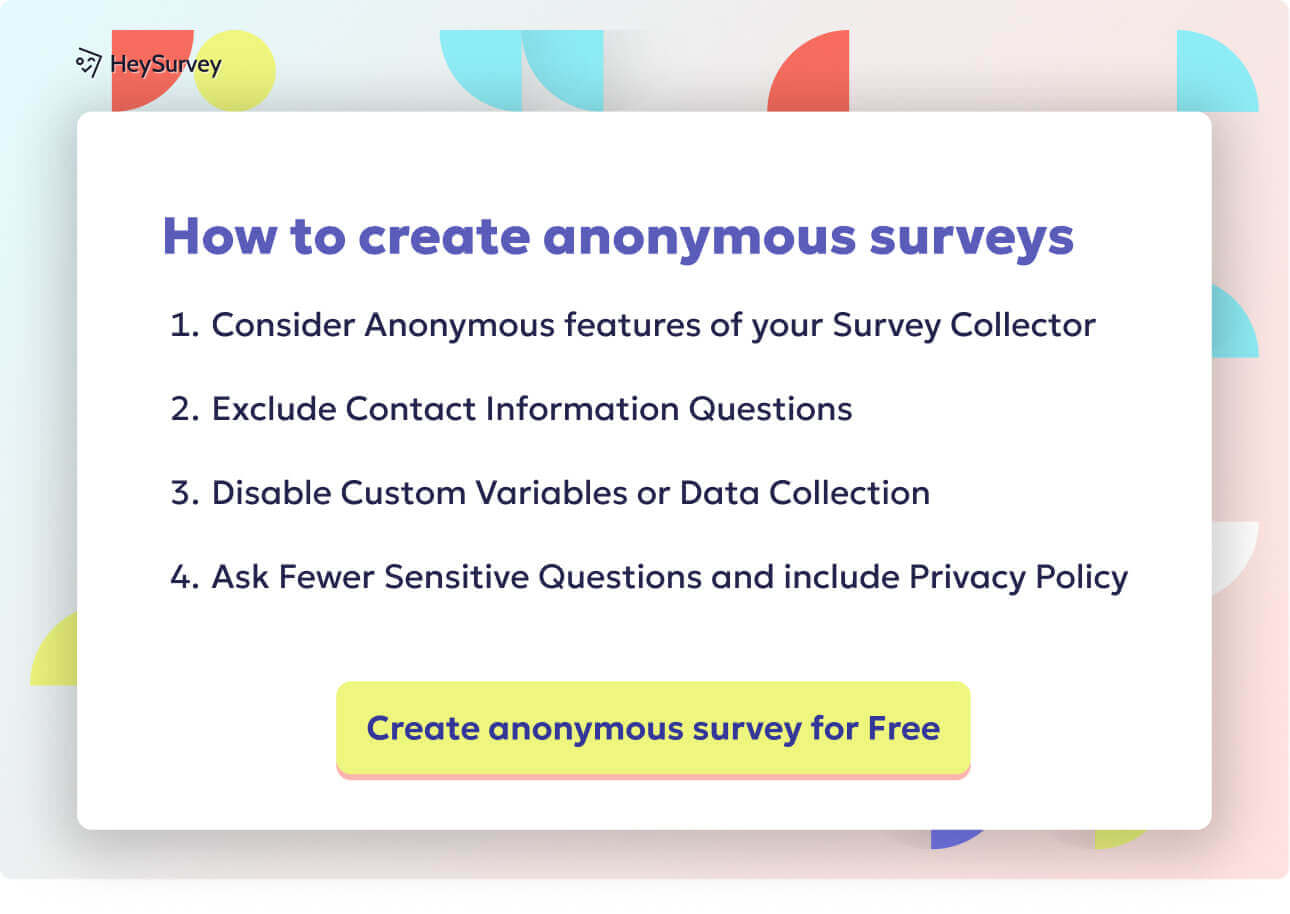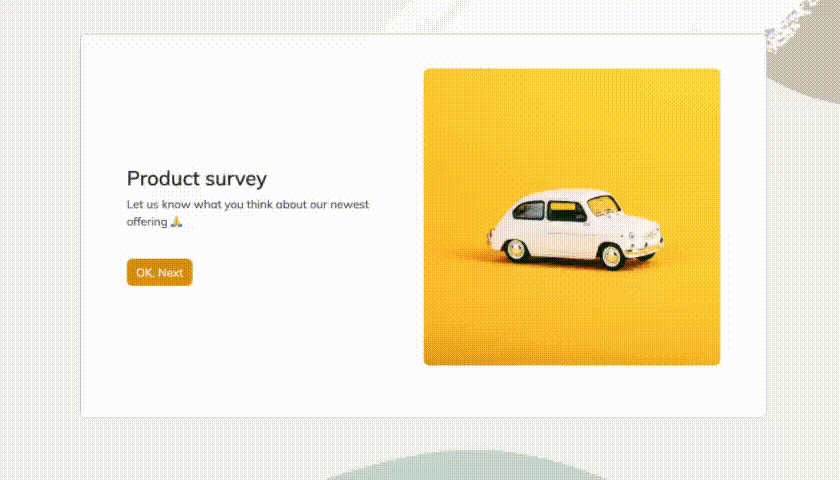29 Screener Survey Questions: Types, Examples & Best Practices
Discover 25+ expert screener survey questions with examples, types, and best practices to filter the right respondents for your research success.
Ever wondered why you’ve been knocked out of a survey right after the first question? Meet the unsung hero (or villain) of research: screener survey questions. Also called “screening questions” or “qualifying questions,” these gatekeepers make sure only the right people get through. Whether it’s weeding out underage participants, non-buyers, or people from the wrong industry, screeners are the first line of defense for meaningful insights. Think market research, UX tests, B2B lead gen, or strict academic studies—screeners keep your results honest, targeted, and actionable. Buckle up: We’re unpacking types, top examples, and professional tips to help you nail your screeners.
Demographic Screener Questions
What Are Demographic Screener Survey Questions?
Demographic screener survey questions are the classic opening act for filtering your sample. These queries cover the basics of who your respondents are—think age, gender, income level, location, and family makeup. They’re used when your research hinges on a particular segment of the population and you want to hit your mark, not just cast a wide (wasteful) net.
Why & When to Use
If you’re launching a product only available to people over 21, testing content just for new parents, or running a campaign in a single state, you need to filter for those attributes first.
Use-cases for demographic screener survey questions include: - Age-restricted product launches (alcohol, vaping, or certain financial services) - Gender-specific services (women’s health, men’s grooming) - Region or state targeting (state-level initiatives or city-based events) - Income-bracket targeting (luxury cars, budget home goods) - Family status (content for parents, products for single adults)
A well-written demographic screener opens the door to targeted, context-rich analysis.
Sample Demographic Screener Questions
Here are five examples of demographic screening questions that set you up for success:
What is your age range?
- Under 18
- 18–24
- 25–34
- 35–44
- 45–54
- 55+
- Under 18
Which of the following best describes your gender?
- Female
- Male
- Non-binary
- Prefer not to say
- Female
In which state or region do you currently live?
- [Drop-down list of regions]
What is your total annual household income before taxes?
- Under $25,000
- $25,000–$49,999
- $50,000–$74,999
- $75,000–$99,999
- $100,000+
- Under $25,000
Which of the following best describes your current living arrangement?
- Living with parents
- Renting alone
- Renting with others
- Homeowner
- Other
- Living with parents
Mix and match these demographic screener survey questions to build the perfect entry filter for your study.
Integrating demographic questions into surveys, rather than presenting them separately, enhances response rates and data quality without affecting overall participation. (surveypractice.org)
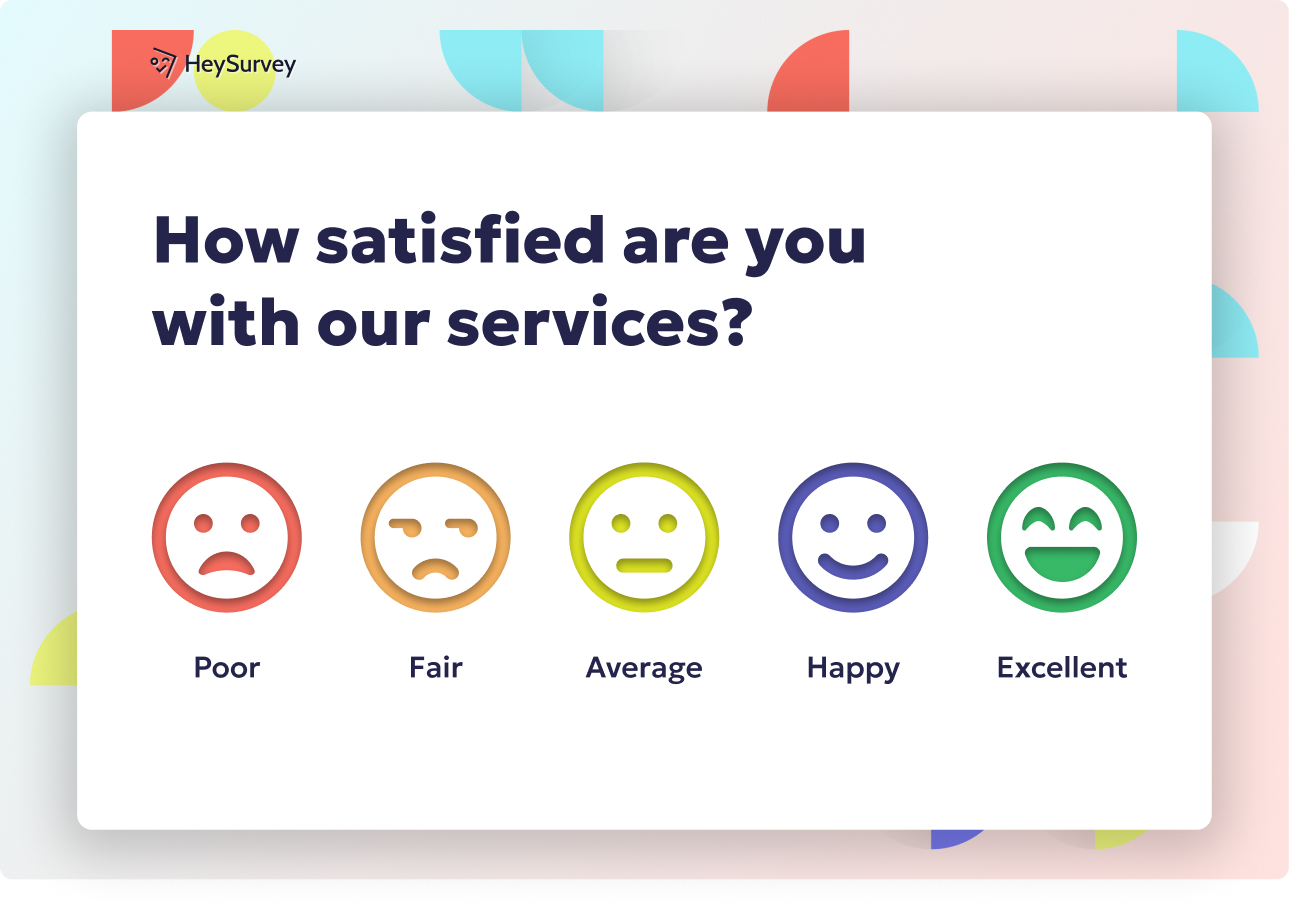
Creating your perfect screener survey with HeySurvey is a breeze—even if you’re a total newbie. Here’s how to get started in just three simple steps, plus a couple of bonus tips to make your survey shine.
Step 1: Create a New Survey
- Head over to the HeySurvey dashboard and click Create New Survey.
- Choose either a blank survey if you want total control or pick a pre-built template that fits your screener style.
- Give your survey an internal name to keep things organized—you can always change this later.
- Now you’re in the Survey Editor, ready to add your questions!
Step 2: Add Screener Questions
- Click the big Add Question button at the top or between existing questions.
- Select the question type that fits your screener—usually multiple choice for easy filtering.
- Enter your screener question text and add answer choices.
- Mark questions as required so no one skips your all-important filters.
- Repeat until you’ve got all your demographic, behavioral, psychographic, or product-related screeners lined up.
- Pro tip: Use HeySurvey’s branching feature to send respondents down different paths depending on their answers, making your screener efficient and personalized.
Step 3: Publish Your Survey
- Hit the Preview button to see how your screener flows.
- Tweak any question wording or design quirks to make your survey smooth and reader-friendly.
- When you’re happy, click Publish—but note you’ll need a free HeySurvey account to publish and collect responses.
- Copy your survey link and share it with your target audience or embed it on your website.
Bonus Steps: Make Your Screener Stand Out
- Apply Branding: Use the Designer Sidebar to add your logo and customize colors so your screener looks like your own.
- Define Settings: Set start/end dates, limit responses, or create a redirect URL for when folks complete your screener.
- Skip & Branch: Use branching logic to skip irrelevant questions or send people based on their qualifying answers—so nobody wastes time.
Ready to give it a spin? Click the button below to launch a screener survey template and start screening smarter with HeySurvey!
Behavioral Screener Questions
What Are Behavioral Screener Questions?
Behavioral screener questions shine a spotlight on what participants have actually done—recent purchases, online habits, event attendance, and more. These questions segment respondents based on action, not just identity. It’s one thing to know your target is a 30-year-old woman, another to know she buys eco-friendly cleaning products every month.
Why & When to Use
Use behavioral screeners when it matters how someone has acted—or NOT acted—in the past. These questions are prime for: - Pinpointing high-value shoppers who buy often - Segmenting between frequent users and occasional dabblers - Identifying viewers who binge-watch versus casual TV skimmers - Distinguishing conference attendees from those who’ve only read recaps online - Filtering for specific behaviors that match your research goal
Behavioral screener examples catch the right crowd, separating the doers from the daydreamers.
Sample Behavioral Screener Questions
Ready to dig into some behavioral screener examples? Try these:
How often have you purchased organic groceries in the past three months?
- Weekly
- Monthly
- Less often
- Never
- Weekly
In the last six months, how many times have you used a ride-sharing app (e.g., Uber or Lyft)?
- 0 times
- 1-2 times
- 3-5 times
- 6+ times
- 0 times
Have you attended a live sporting event in the past year?
- Yes
- No
- Yes
During the last 30 days, how many hours per week did you spend watching streaming services (e.g., Netflix, Hulu)?
- Less than 1 hour
- 1–5 hours
- 6–10 hours
- 11+ hours
- Less than 1 hour
Which, if any, of the following fitness activities have you participated in during the last month?
- Running
- Cycling
- Yoga or Pilates
- Gym workouts
- None of the above
- Running
By weaving these behavioral screener questions into your survey, you’ll filter with precision—and maybe spot a pattern your competitors miss!
Shorter screener questions are more effective in evaluating respondent attentiveness in online surveys. (journals.sagepub.com)
Psychographic Screener Questions
What Are Psychographic Screener Questions?
Now we swap “what you do” for why you do it. Psychographic screener questions dig into attitudes, beliefs, personality, and lifestyle. This isn’t about where you live or what you bought, but about your values and motivations. Think “adventurous,” “eco-conscious,” or “brand-loyal.”
Why & When to Use
Use psychographic screening survey items to slice your audience by: - Attitude towards sustainability or innovation - Lifestyle preferences (minimalist, luxury, tech-forward) - Personal values (family-first, career-driven) - Brand affinity or general worldview
They’re ideal when you need to: - Develop customer personas for better targeting - Test creative concepts with segments aligned on values - Position a brand or product strategically against competitors
Psychographic screening survey questions will help you reveal why people might choose your product—or why they avoid it.
Sample Psychographic Screener Questions
Here are five must-have psychographic screener survey picks:
Which of the following best describes your approach to new technology?
- I love trying the latest gadgets as soon as they’re available
- I adopt new tech after others have tested it
- I prefer to stick with what I know
- I avoid technology when possible
- I love trying the latest gadgets as soon as they’re available
How much do you agree with the following statement: “I try to buy from companies that are environmentally responsible.”
- Strongly agree
- Somewhat agree
- Neutral
- Somewhat disagree
- Strongly disagree
- Strongly agree
Which statement best matches your attitude toward travel?
- I travel as often as I can
- I travel for work only
- I prefer to stay close to home
- I rarely travel
- I travel as often as I can
When making a purchase, how important is brand reputation to you?
- Very important
- Somewhat important
- Not important
- I don’t pay attention to brands
- Very important
Which of the following best describes your lifestyle?
- Health-focused
- Career-oriented
- Family-centered
- Social/active
- Laid-back/relaxed
- Health-focused
With these psychographic screener questions, uncover the deeper “why” behind your audience’s choices—and give your research that extra magic.
Firmographic Screener Questions (B2B)
What Are Firmographic Screener Questions?
If consumers have demographics, businesses have firmographics. These questions focus on company-specific characteristics: industry, company size, revenue, decision-making authority, and even tools stack. Firmographic B2B screener questions are critical when you’re selling to businesses, not individuals.
Why & When to Use
B2B screening questions let you: - Filter for target industries (tech, healthcare, finance) - Home in on business size (startups vs. enterprises) - Segment decision-makers by title or function - Assess annual company revenue for product fit - Target organizations already using (or not using) a key technology
They’re a must for SaaS launches, account-based marketing campaigns, pilot studies for enterprise tools, and industry-specific research.
Sample Firmographic Screener Questions
Need some B2B screener question examples for your next project? Try these:
Which of the following best describes your organization’s industry?
- Technology
- Healthcare
- Manufacturing
- Retail
- Other (please specify)
- Technology
How many full-time employees work at your company?
- 1-10
- 11-50
- 51-200
- 201-500
- 501+
- 1-10
What is your current job function?
- Executive/Owner
- Sales/Marketing
- Operations
- IT/Technical
- Other
- Executive/Owner
What was your company’s approximate annual revenue last year?
- Less than $500,000
- $500,000–$5 million
- $5 million–$50 million
- $50 million+
- Less than $500,000
Which software platforms does your organization currently use for project management?
- Jira
- Trello
- Asana
- None
- Other (please specify)
- Jira
Mix and match these firmographic screener questions in your B2B surveys for pinpoint targeting—no more cold-lead headaches.
Effective firmographic segmentation enables B2B marketers to deliver personalized content, leading to higher conversion rates and optimized resource allocation. (salesintel.io)
Product-Usage Screener Questions
Focus and Purpose
In product research, product usage screener survey items are the MVP. They ask about current or past use of a product, brand, or solution and qualify respondents based on real-world experience. If you only want feedback from actual users or need to compare brand loyalists with switchers, these are your go-to.
Why & When to Use
Employ these screeners when you need: - Input from customers who’ve used your product in the last 3, 6, or 12 months - A/B test results only from people familiar with a competitor’s offering - Participant pools for satisfaction follow-ups or product updates - Detailed user stories or pain points for concept validation
In concept tests, satisfaction surveys, or competitive benchmarks, product-usage screeners ensure your feedback isn’t “empty calories.”
Sample Product-Usage Screener Questions
Need inspiration for your product usage screener survey? Here are five powerful questions:
When did you last use [product/brand name]?
- Within the past week
- Within the past month
- Within the past 3 months
- More than 3 months ago
- Never used
- Within the past week
Which of the following brands of smartphones have you personally used in the past 12 months?
- Apple
- Samsung
- Google
- Other
- None of the above
- Apple
Have you ever participated in a free trial of our service?
- Yes
- No
- Yes
In the last six months, how frequently have you purchased beverages from a coffee shop?
- Daily
- Several times a week
- Weekly
- Monthly or less
- Never
- Daily
Which streaming services have you subscribed to during the past year?
- Netflix
- Hulu
- Amazon Prime Video
- Disney+
- None of the above
- Netflix
Smart, targeted product usage screener survey items keep your research honest—and your results, actionable.
Purchase-Intent Screener Questions
What Are Purchase Intent Screener Questions?
Picture this: Your product hasn’t hit shelves yet, but you want to know who’s already itching to buy. Enter the purchase intent screener—questions designed to segment people by their likelihood to purchase soon or at all.
Why & When to Use
These screeners are essential when: - Testing new ad concepts for relevance and likelihood to convert - Segmenting early adopters, fence-sitters, and folks “just browsing” - Refining marketing funnels or nurturing campaigns - Validating product-market fit and pricing acceptability
With these purchase intent screener examples, you reach those most likely to turn curiosity into dollars (or at least solid feedback).
Sample Purchase-Intent Screener Questions
Ready to screen for buyers, not just browsers? Try these purchase intent screener examples:
How likely are you to purchase [product/service] in the next six months?
- Very likely
- Somewhat likely
- Not likely
- Not at all likely
- Very likely
Where are you in your decision-making process for [product/service]?
- Just started considering
- Gathering information
- Comparing alternatives
- Ready to buy
- Not interested
- Just started considering
Which of the following describes your intent regarding our product?
- Already purchased
- Planning to purchase soon
- Considering purchase
- No plans to purchase
- Already purchased
What would most influence your decision to purchase [category]?
- Lower price
- Better features
- Recommendations
- Brand reputation
- Nothing—I don’t plan to buy
- Lower price
Have you actively searched for information about [product/service] in the last month?
- Yes
- No
- Yes
Blend these purchase intent screener examples into your survey, and you’ll zero in on serious buyers, not tire-kickers.
Eligibility & Qualification Screener Questions
Eligibility & Gatekeeping Explained
When participation isn’t just nice to have but must to have, you need eligibility or qualification screener questions. These are the “ID check at the door” questions—requiring you to meet strict criteria before progressing.
Why & When to Use
Use a qualification screener survey when: - Your study is legally required to restrict based on age, location, or medical status - Quotas are needed for balanced subgroups, like “half male, half female” - Sensitive research demands only those with certain conditions or qualifications participate - Regulatory compliance would otherwise land you (and your IRB) in hot water
These qualification screener survey items ensure your data is clean, compliant, and valid.
Sample Eligibility Screener Questions
Want compliance and clarity? Try these top eligibility questions:
Are you at least 21 years of age?
- Yes
- No
- Yes
Do you currently reside in the United States?
- Yes
- No
- Yes
Have you ever been diagnosed with [medical condition] by a healthcare professional?
- Yes
- No
- Prefer not to say
- Yes
Which of the following statements best describes your current employment status?
- Employed full time
- Employed part time
- Not employed
- Student
- Retired
- Employed full time
Have you participated in any market research studies in the past 90 days?
- Yes
- No
- Yes
With these qualification screener survey examples, you’ll stay on the right side of requirements and quotas.
Best Practices: Dos & Don’ts for Writing High-Performing Screener Questions
Ready to craft the perfect screener survey? Here’s the secret sauce. Using the right approach makes your survey smarter (and your day easier).
Dos
- Keep it short and simple—single select, clear language, no riddles.
- Use neutral and unbiased wording to avoid tipping your hand.
- Randomize option order (when possible) to minimize order bias.
- Set clear rejection thresholds (like “must answer A or B to continue”).
- Review for restrictive logic so you don’t lock out good respondents by accident.
Don’ts
- Avoid leading language (“As a responsible parent…”)
- Don’t use insider jargon unfamiliar to general audiences.
- Never double-barrel (“Do you own or lease a car and prefer SUVs?”)
- Don’t hide important filters in the middle of a question pile—disclose intent.
- Watch out for demographic bias—don’t accidentally exclude with loaded terms.
Quick Checklist for Screener Flow
- Questions should flow from general to specific
- Qualify as early as possible to respect respondents’ time
- Balance strictness vs. inclusiveness
- Test your survey with a small group first
- Always check data for odd drop-offs
By sticking to these screener survey best practices, your survey will reach the right folks—and keep them in a good mood while doing so!
Conclusion & Action Plan
Well-crafted screener questions aren’t just a formality—they unlock more reliable, relevant, and actionable insights (and make you look like a research rockstar). The next step? Test your screeners, validate with a pilot run, and iterate for improvement. Dive even deeper with our survey design guide for all things methodology. Want to level up now? Grab our free screener question template and start screening smart!
Related Market Survey Surveys
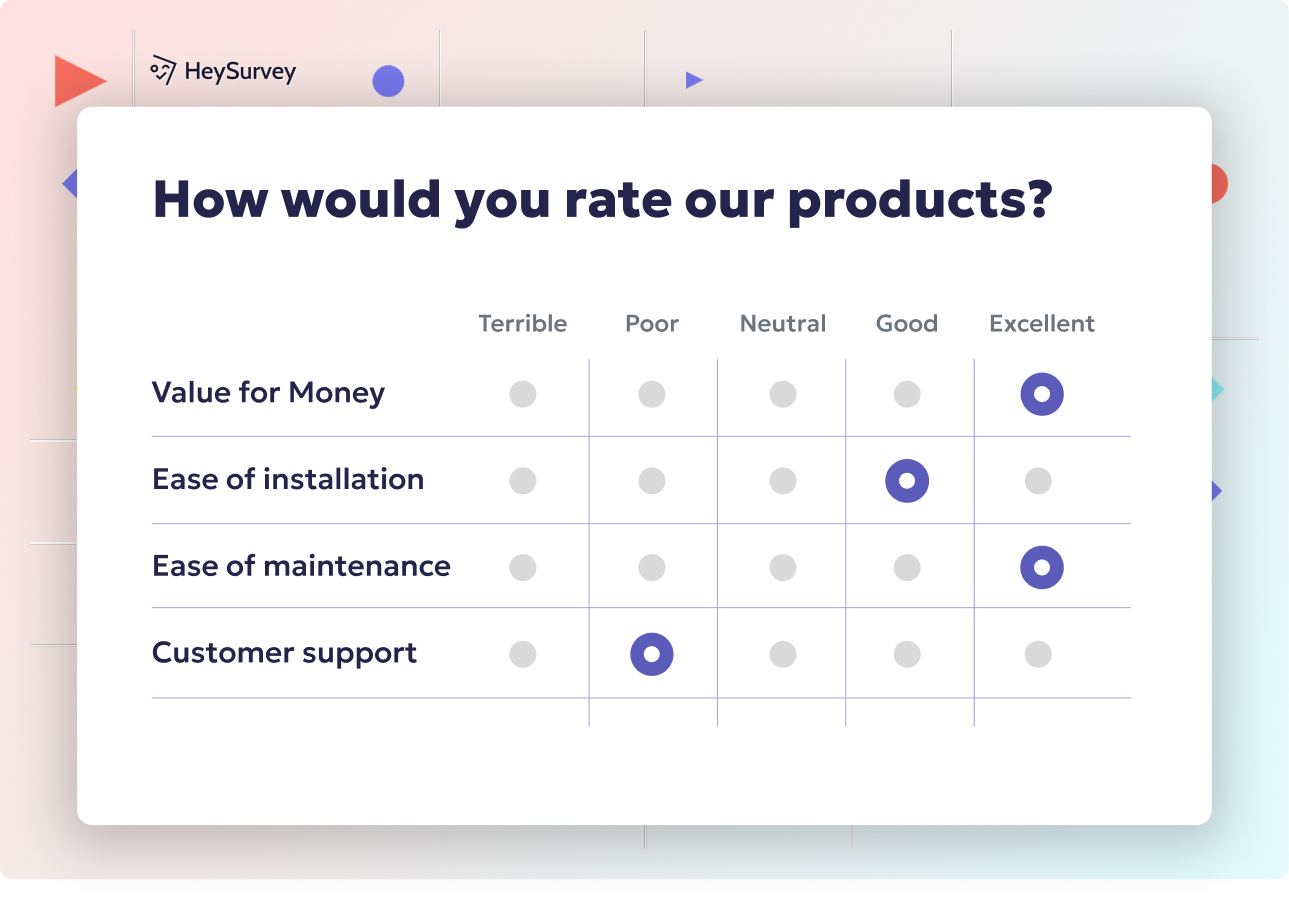
32 Market Research Survey Questions: Types, Samples & Tips
Explore 30+ market research survey questions with examples across types like CSAT, concept testin...

30 Coffee Survey Questions: The Complete Guide for Cafés & Brands
Discover 25+ expert coffee survey questions to boost cafés, product development, and brand insigh...
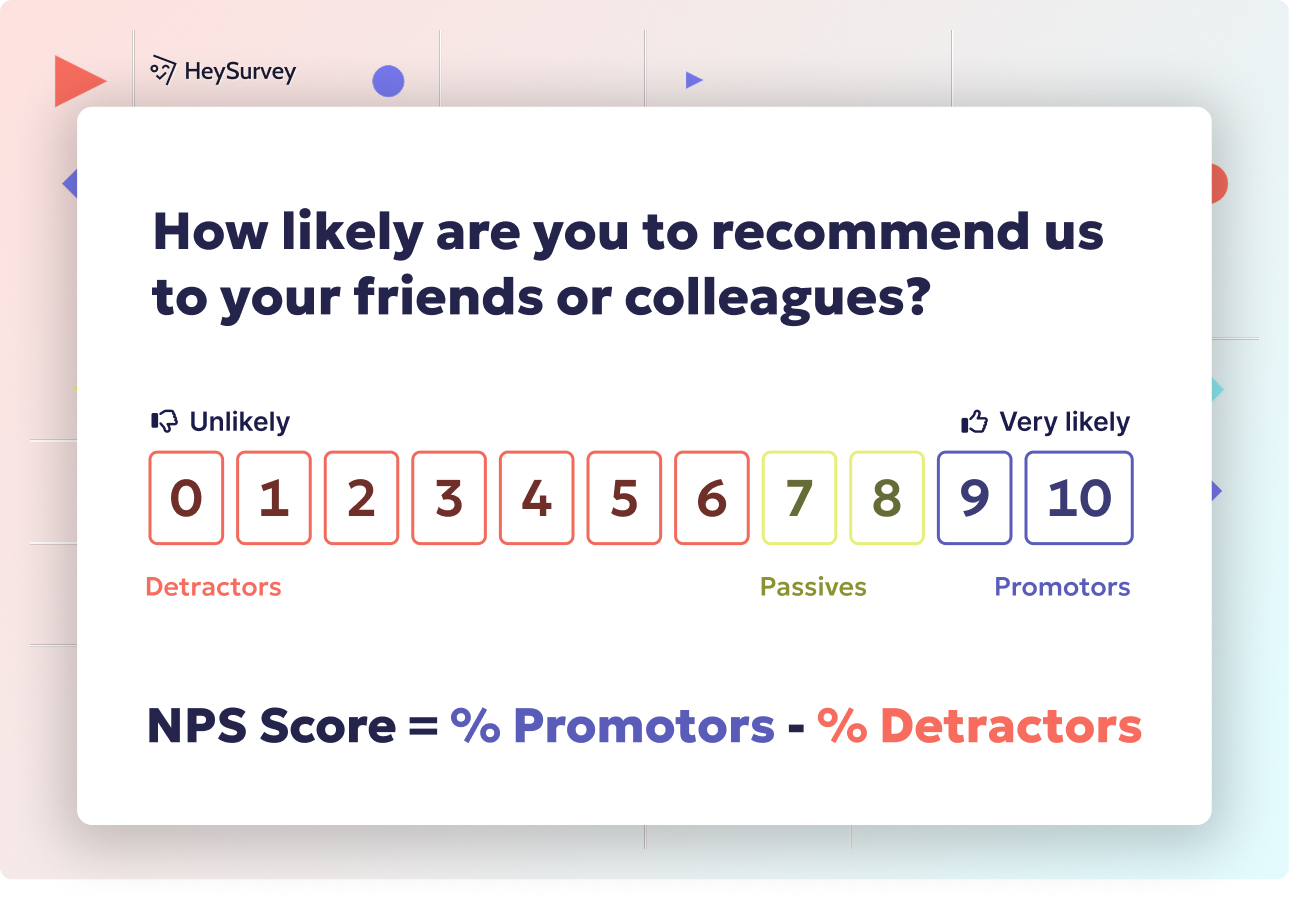
31 Content Marketing Survey Questions for Actionable Insights
Discover 25+ content marketing survey questions to gather actionable insights—boost audience alig...
